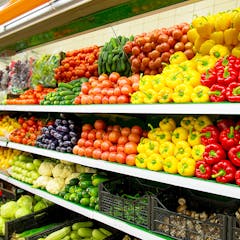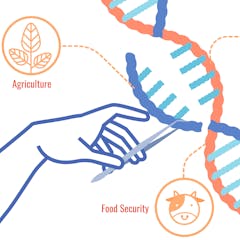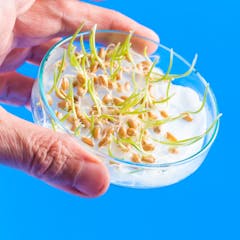
Articles on GMO crops
Displaying 1 - 20 of 25 articles

From cancer immunotherapy and antibiotics to GMO crops and pandemic surveillance, gain of function is a cornerstone of basic research.

Debates about GMOs and gene-edited foods are multifaceted. There’s no evidence they’re not safe to eat, but no room for complacency either.

This year’s unprecedented fall armyworm invasion has laid waste to lawns, athletic fields and crops. Is it a fluke? When will it end?

The six food trends likely to be front and centre in 2019.

Predictions suggest that Africa will suffer dramatic losses of crops and productive land as the climate warms. Perhaps adopting GM crops designed to tolerate stress can save the continent from famine.

Many of the crop plants that feed us waste 20 percent of their energy, especially in hot weather. Plant geneticists prove that capturing this energy could boost crop yields by up to 40 percent.

You may not agree with using the gene-editing tool, CRISPR, to alter the DNA of human babies. But what about using it to engineer plants? Or wipe out one of the world’s most dangerous creatures?

It has taken hundreds, if not thousands, of years to create the juicy, shiny produce that you take for granted at the supermarket. But now there is a faster way to domesticate wild fruits and veggies.

Genetic modification rules now cover gene edited crops but exclude plants bred traditionally with the same properties.

Why are consumers so reluctant to embrace genetically modified foods? A new study suggests agricultural biotech companies are failing to show consumers a personal benefit to buying GM foods.

As the climate changes and the population grows, meeting the demand for food will become more difficult as arable land declines. But an international team of scientists has figured out an innovative solution to dramatically bumping up crop yields.

South Africa urgently needs to rethink its existing agricultural model.

GMO crops have been rejected by many countries and consumers. Now, an international team of researchers are creating better crops using DNA editing–without inserting foreign genes into the plant.

When the United States was settled, nearly everyone was a farmer. Today only 2 percent of Americans live on farms, and many of us are illiterate about where food comes from or what kinds are healthy.

New research pinpoints the genes that could counteract decades of bland breeding.

Cassava is a key food source in tropical countries, but yields have been flat for decades. New genetic research is identifying many options for boosting production of this valuable staple crop.

Genome editing and synthetic biology are giving rise to new forms of life. But do these organisms have conservation value as part of earth’s biodiversity?

Advocates have argued for years about whether genetically engineered crops are safe to grow and eat. Plant pathologist and geneticist Pamela Ronald calls for a more nuanced discussion.

Are genetically engineered crops safe for human health and the environment? A new report says yes but points out problems and regulatory gaps. Three members of the study panel offer their takeaways.

We can tweak levels of a special vitamin that acts as an appetite control system.
